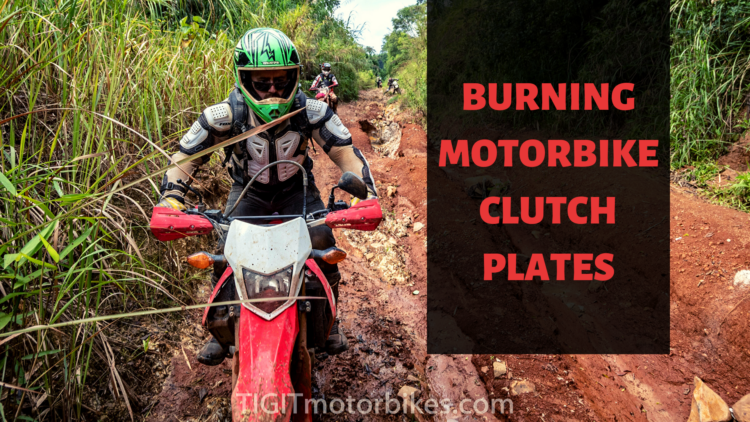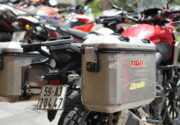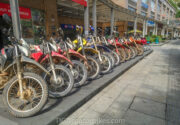Clutch plates or friction plates are the part of the motorbike that engage the gears. It is probably the most common breakdown that Tigit Motorbikes has to deal with in terms of daily support.
Clutch plates are either working or not working. There isn’t a “gradual fade”. When picking up the motorbike from Tigit, make sure the motorbike is accelerating quickly and that gear changes are “catching”. If everything appears to be fine, then the motorbike clutch will survive the journey.
When a clutch begins to break, there is a “very fast fade time”, that lasts between 100-500km depending on driving style. A driver who has determined the problem of a rapidly fading clutch can nurse the motorbike to a mechanic shop by driving gently.
Contents [show]
Tigit detailed video about clutch plates
Common signs of a burnt clutch plate
- “My motorbike won’t go above 60km/h. The engine keeps reving, it just won’t go any faster”
- “I put the bike in gear one, but it won’t accelerate anymore. It just sits there”
- “My bike seems to have no power going up hills”
Burnt Clutch plates from Tigit’s perspective.
Clutch plates don’t “fade slowly”. They are a piece of the motorbike that is either working or broken. In the context of casual, controlled and disciplined driving there is no reason for the clutch on the motorbike to burn during a client’s journey. We consider clutch plate burn to be driver error and therefore driver responsibility.
Clutches burn for two reasons:
1. The clutch lever engagement position is wrong.
- Caused by a cable stretching or the screws loosening.
- Caused by the driver physically moving the clutch lever engagement position further into the fingertips.
2. Poor technique getting out of the mud
- Caused by half engaging the clutch and applying the gas aggressively for a reasonable amount of time when stuck in the mud.
Motorbike clutch plates within the Tigit fleet
Clutch plate maintenance price will vary. Some mechanics will replace the one broken plate, some mechanics will replace all the plates, and some mechanics will replace the entire clutch.
It is not possible to control what they decide to do, and on this particular “breakdown”, there isn’t any negotiating.
Honda Blade
The blade is a semi-automatic and has no clutch handle. Therefore, the client should never find themselves in a position of burning the clutch. However, resting the foot on the gear pedal will semi-disengage the clutch (just like a normal handle clutch), and this can cause the client to burn the clutch on the motorbike. Armed with this knowledge, drivers can actually treat the blade as a normal manual motorbike. Simply move your knowledge of the left-hand clutch to your left foot and the humble Honda Blade Semi-Auto will turn into a wheelie popping machine.
Be careful, don’t half rest the foot on the gear pedals.
If the clutch does burn on the Blade, any Honda Head shop will have the part.
Repair Price: Generally around $25 to fix, but prices may vary.
Honda XR 150
Mechanics in Vietnam won’t know, but the Honda XR 150 has the same clutch plate as the Honda Blade. This may require Tigit Motorbikes to translate to the mechanic on the phone. Once this has been determined and accepted by the mechanic, the Honda XR 150 can quickly and easily be fixed.
Repair Price: Usually around $50-75. The part is the same as the Blade, but mechanics will charge extra for fixing motorbikes that fall outside the normal Honda shop models.
Yamaha Exciter / Honda Winner
Routine and stocked countrywide.
Repair Price: Around $50
Honda CRF 250 and Royal Enfield Himalayan
Tigit will need to send the part to your destination. This can take 1-2 days.
Repair Price: $100
Honda CB 500x
Tigit will need to send the part to your destination. This can take 1-2 days.
Repair Price: $150
























